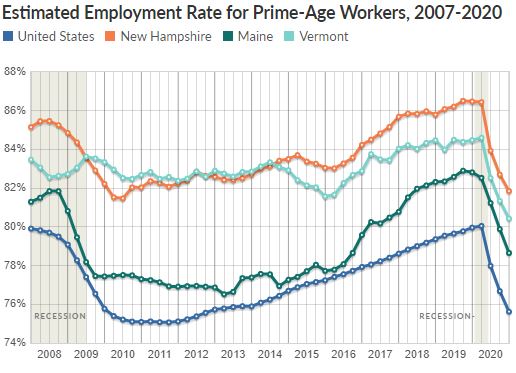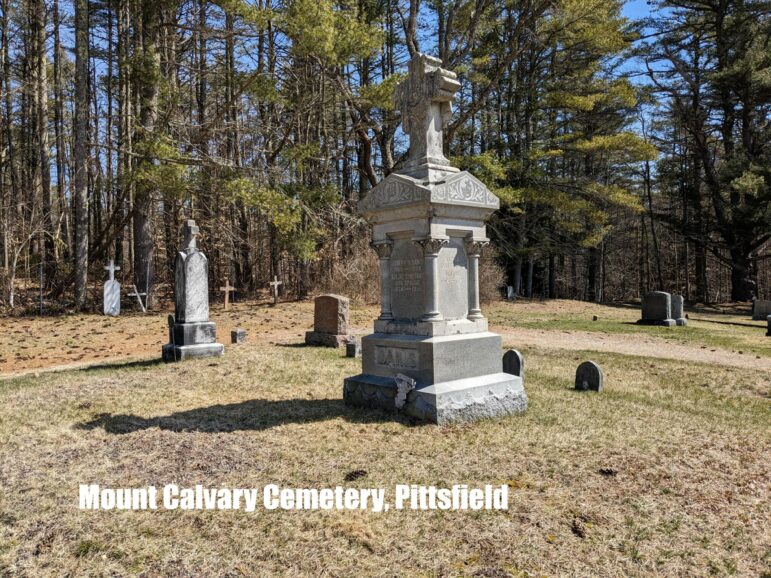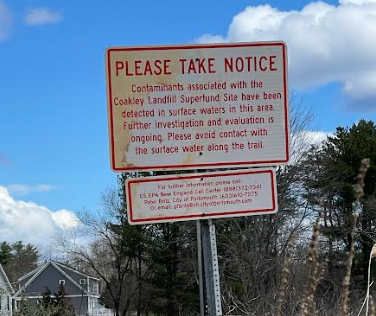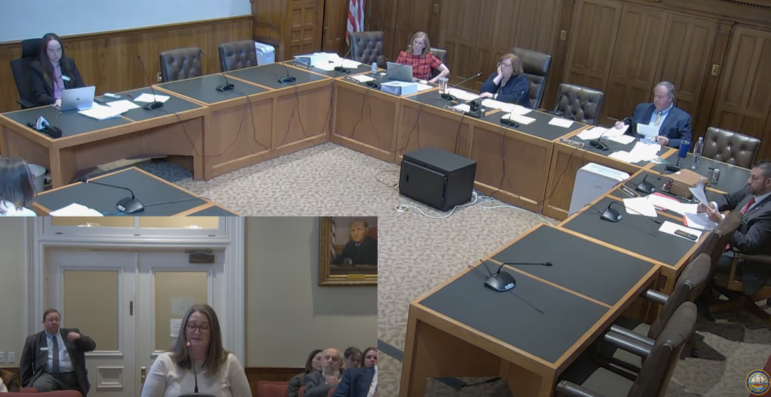By GARRY RAYNO, InDepthNH.org
CONCORD — A new study of the pandemic’s effect on people in their prime working years shows every state’s employment rate dropped, some significantly due to the coronavirus.
The Pew Charitable Trust used U.S. Labor Department statistics to compare the percentage of people between the ages of 25 and 54 years old who were working before and during the pandemic.
Nationally the percentage of employees in their prime working years fell from 80 percent in 2019 to 75.8 percent in 2020 during the height of the pandemic.
“This means that for every 100 people of prime working age, about four fewer were employed in 2020 than in 2019 as the pandemic stifled economic activity for much of the year,” said Jeff Chapman, Director of State Fiscal Health for Pew. “The new downturn dealt all but three states their largest annual declines in the prime-age employment rate in more than 10 years.”
New Hampshire has a higher percentage of people in the prime category than the national average, 86.5 percent, while the number dropped to 81.8 percent.
However the 4.7 percent drop is above the national average of 4.3 percent, along with Massachusetts, Connecticut and Rhode Island, while Vermont and Maine experienced slightly less job loss than the national average.
Tourist dependent Nevada and Hawaii suffered the greatest job losses among people in their prime working years, while Alaska and Kansas the lowest percentage.
“Some of the hardest-hit jobs were those in leisure and hospitality. Casinos, hotels, and other attractions closed or scaled back operations for months in Nevada, accounting for about two-thirds of the state’s annual average job losses among people of all ages,” according to the authors of the report. “Air travel to tourism-dependent Hawaii ceased nearly completely as the pandemic struck.”
While New Hampshire’s tourism and hospitality industry was hit hard by the pandemic, other sectors of the state’s economy experienced little impact.
“Data in early 2021 pointed to a recovering labor market that still had a long way to go. The national percentage of employed 25- to 54-year-olds was 77.8 percent in July,” the report noted “suggesting that the rate had rebounded by an estimated three-quarters from its initial drop to 69.6 percent in April 2020 when the pandemic triggered business closures.”
New Hampshire’s employment ratio for prime workers has traditionally been between 82 and 84 percent, but increased to above 86 percent prior to the pandemic and was 86.6 percent in December 2019.
The prime-age employment-to-population ratio is an economic indicator that provides a broader view of labor market conditions than the unemployment rate, which excludes those not looking for work.
Ratios are also influenced by changes in the population and demographic shifts.
“The ratio decreases when the number of 25- to 54-year-old workers in a state either declines faster or increases slower than the population for the same age group,” the report’s authors note. “Although the prime-working-age population dipped in nearly half of states last year, the loss in corresponding employment was even greater, so their rates declined.”
New Hampshire has a growing percentage of older citizens, with fewer babies born. The migration into New Hampshire from other states is largely responsible for the increase in the state’s population, according to figures from the 2020 U.S. Census.
Low-wage earners
The Pew report notes stark disparities in workforce segments over the pandemic recession ending in April 2020.
“Low-income workers, in particular, have struggled to regain a foothold in the economy as they are often employed in industries most upended by the pandemic, such as restaurants and hotels,” the authors wrote. “The same is true of younger workers: The 2020 employment-to-population ratio for those under age 25 fell nationally even more sharply than for those in their prime working years, compared with the year earlier.”
A new issue brief by the New Hampshire Fiscal Policy Institute found a similar impact on low-wage workers.
“Industries and regions of the state more heavily reliant on service-based work, or other work models that could not easily transition to more limited public interaction, faced the largest employment losses. Many of these service industries paid lower wages, suggesting that workers in New Hampshire earning lower incomes were most impacted by lost or reduced wages, affecting their economic security. Analysis shows that lower wage employment was estimated to be 16.4 percent below pre-pandemic levels in New Hampshire in late June 2021. While the state’s unemployment rate has dropped to pre-pandemic levels, other data show that overall employment remains lower than pre-pandemic levels, with fewer people participating in the workforce due to key challenges such as the limited availability of childcare,” according to the brief “Uneven Employment Impacts and Recovery from the COVID-19 Crisis.”
The Pew report notes Black and Hispanic prime-age employment also dropped significantly more than for white workers across the country.
Garry Rayno may be reached at garry.rayno@yahoo.com.





